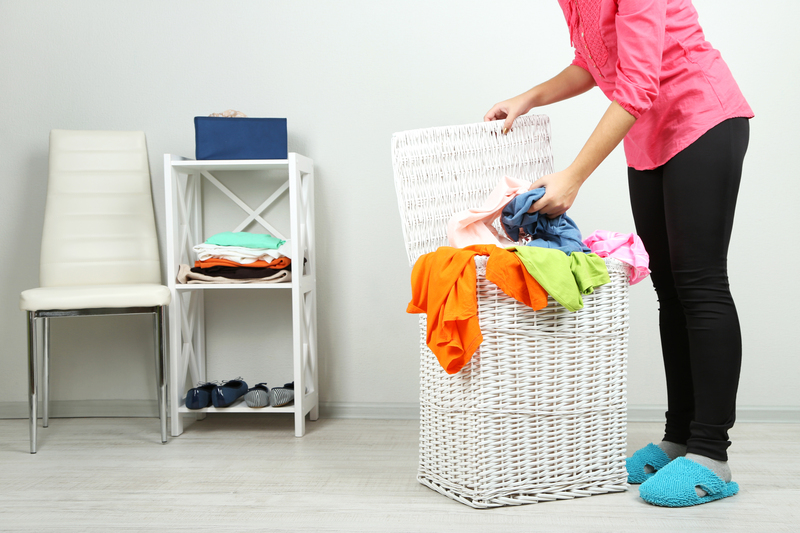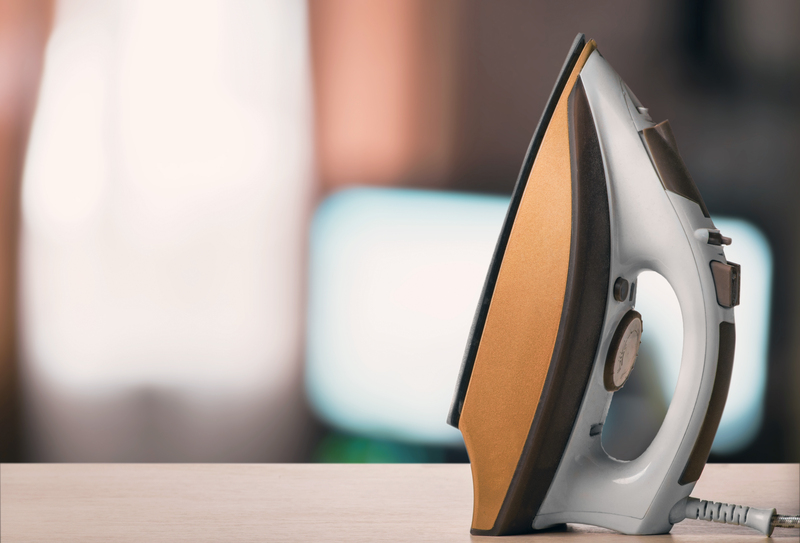Steps to Achieve a Cleaner, Allergen-Reduced House
Posted on 30/05/2025
Steps to Achieve a Cleaner, Allergen-Reduced House
Having a clean and allergen-reduced house is vital for healthy living, especially for those suffering from asthma or other respiratory sensitivities. This comprehensive guide will walk you through the most effective strategies, best practices, and practical steps to significantly minimize allergens and maintain a spotless, inviting home environment.
Why Is It Important to Minimize Allergens in Your Home?
Allergens--substances that can cause allergic reactions--are commonly found in house dust, pet dander, pollen, mold, and certain cleaning supplies. If not managed, these triggers can accumulate, leading to persistent discomfort, increased allergy symptoms, or severe asthma attacks. Maintaining a clean, allergen-reduced house ensures better indoor air quality, aids restful sleep, and enhances your family's overall well-being.
Common Sources of Indoor Allergens
- House dust mites
- Pet dander and fur
- Mold and mildew
- Pollen
- Cockroach droppings
- Certain cleaning chemicals

Effective Steps to Achieve a Cleaner, Allergen-Reduced House
To effectively reduce allergens, it's important to follow a systematic, room-by-room approach. Let's outline the best strategies to keep your home clean, healthy, and allergen-free.
1. Commit to a Cleaning Schedule
The foundation of an allergen-minimized home is a regular cleaning routine. Dust and allergens accumulate quickly, so having a steady plan ensures nothing is overlooked.
- Vacuum high-traffic areas at least twice a week using a vacuum with a HEPA filter.
- Dust surfaces with a damp cloth to avoid scattering dust into the air.
- Deep clean carpets and upholstery every three to six months.
- Wash bedding, curtains, and throw blankets weekly in hot water (at least 130?F/54?C).
2. Focus on Allergen Hotspots
Some areas accumulate more allergens than others. Prioritize cleaning the following areas:
- Bedrooms - Bedding, pillows, mattresses, and carpets are dust mite havens.
- Living rooms - Upholstered furniture, curtains, and rugs trap pet dander and dust.
- Bathrooms - High humidity encourages mold and mildew growth.
- Kitchens - Food crumbs and moisture attract cockroaches and mold.
3. Choose Hypoallergenic and Non-Toxic Cleaning Products
Many conventional cleaning supplies release volatile organic compounds (VOCs) that worsen indoor air quality and irritate allergies. Instead, select hypoallergenic, fragrance-free, and non-toxic cleaners to create a safer environment.
- Look for products labeled "free & clear" or "fragrance-free."
- Use natural solutions like white vinegar, baking soda, and mild unscented soap for everyday cleaning.
- Avoid aerosol sprays and opt for liquid or wipe-based cleaners.
4. Maintain Proper Ventilation
Good airflow is critical for minimizing indoor allergens. Fresh air helps dilute pollutants, while humidity control discourages dust mites and mold.
- Open windows (weather and pollution levels permitting) for 10-15 minutes daily.
- Use exhaust fans in bathrooms and kitchens.
- Install and maintain a high-efficiency whole-house air purifier, or use portable HEPA air purifiers in allergy-prone rooms.
- Keep indoor humidity between 30% and 50% using a dehumidifier if necessary.
5. Control Dust Mites
Dust mites are microscopic pests that thrive in warm, humid environments and feed on dead skin cells. They're a leading cause of year-round allergies.
- Cover pillows, mattresses, and box springs with dust mite-proof encasements.
- Choose washable synthetic bedding instead of feather or down.
- Avoid clutter and heavy drapes which trap dust.
- Remove or minimize carpets, especially in bedrooms.
6. Minimize Mold and Mildew
Mold spores can cause severe allergic reactions and thrive in damp, poorly ventilated spaces. Here's how to reduce mold growth:
- Fix plumbing leaks promptly.
- Repair roof and window leaks as soon as possible.
- Clean shower stalls, tiles, and curtains with vinegar or mildew spray weekly.
- Launder and dry wet items promptly.
- Use a squeegee to remove water from shower walls after each use.
7. Reduce Pet Allergens
Even if you love your furry friends, pet dander is a common household allergen. Keep it in check with these tips:
- Establish pet-free zones, especially in bedrooms and on upholstered furniture.
- Bathe and groom pets weekly (outside, if possible).
- Use HEPA filters in your HVAC system and vacuum cleaner.
- Wash pet bedding often and keep litter boxes clean.
8. Keep Windows and Doors Closed During Allergy Seasons
During high pollen seasons (spring and fall), keep windows and doors closed to prevent outside allergens from entering your home. Use air conditioning and ensure filters are changed regularly.
- Change HVAC and room air purifier filters every 2-3 months, or as recommended by the manufacturer.
- Wipe window sills and door frames frequently to remove accumulated pollen.
- Remove shoes and outerwear immediately upon entering the home to avoid tracking in allergens.
9. Declutter and Organize Your Home
Cluttered homes collect more dust and make cleaning more difficult. The simpler your decor and the less "stuff" you have on surfaces, the easier it is to keep allergens at bay.
- Donate or recycle unused items regularly.
- Store items in closed bins or cabinets.
- Choose furnishings and window treatments that are easy to wipe down or launder.
10. Maintain a Routine Maintenance Plan
Even after a thorough cleaning, allergens can re-enter the home. Establish a monthly and seasonal plan to stay ahead:
- Monthly: Wipe down walls, baseboards, and vents. Check for signs of mold or leaks.
- Seasonally: Deep clean carpets, windows, and air ducts. Rotate and clean mattresses or flip as needed. Service HVAC units before heavy use seasons.
Bonus Tips for a Cleaner, Allergen-Free Home
- Use doormats at all entrances and ask guests to remove shoes to reduce outdoor allergen tracking.
- Replace old, worn-out carpets with hard surface flooring like laminate, tile, or hardwood.
- Opt for leather, vinyl, or tightly woven fabric furniture over plush, textured options.
- Regularly clean and disinfect high-touch areas such as door handles, remote controls, and light switches.
The Role of Professional Cleaning Services in Allergen Reduction
If allergies are severe or time is limited, consider hiring professional, eco-friendly cleaning services. These experts use hypoallergenic products and advanced equipment like steam cleaners and industrial HEPA vacuums, ensuring a deep, thorough cleaning that's hard to replicate with basic home tools.

Frequently Asked Questions About Achieving an Allergen-Minimized Home
- What's the most effective way to minimize allergens in the bedroom?
*Wash all bedding weekly in hot water, use dust mite covers on mattresses and pillows, and keep stuffed toys to a minimum.* - Is air purification necessary?
*Yes, especially for those with severe allergies or asthma. HEPA air purifiers can trap fine particles and improve air quality.* - Can houseplants reduce indoor allergens?
*While houseplants can filter some toxins, they may also harbor mold in their soil, so choose low-maintenance varieties and avoid overwatering.*
Conclusion: Make Your Home a Safe Haven from Allergens
Creating and maintaining a cleaner, allergen-reduced house doesn't have to be overwhelming. By committing to consistent cleaning routines, minimizing clutter, managing humidity, using hypersensitive-friendly cleaning products, and addressing problem areas, your home can become a sanctuary--even for allergy sufferers. Remember, small, consistent actions make a huge difference over time. With these easy-to-follow steps and a few strategic adjustments, you'll enjoy a fresher, healthier, and more comfortable living environment every day.
Take the first step today, and experience the refreshing difference of a truly clean, allergen-reduced home!





